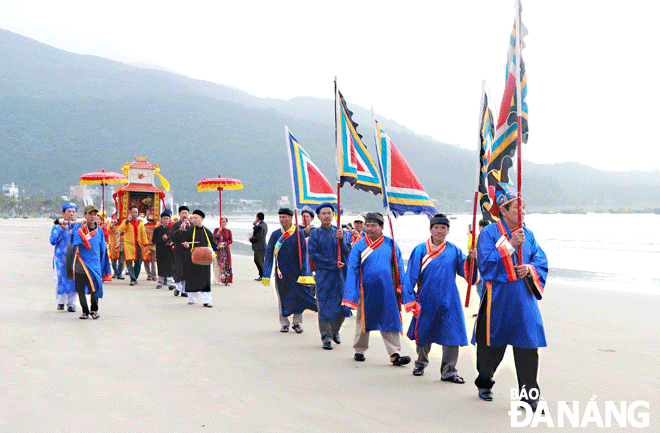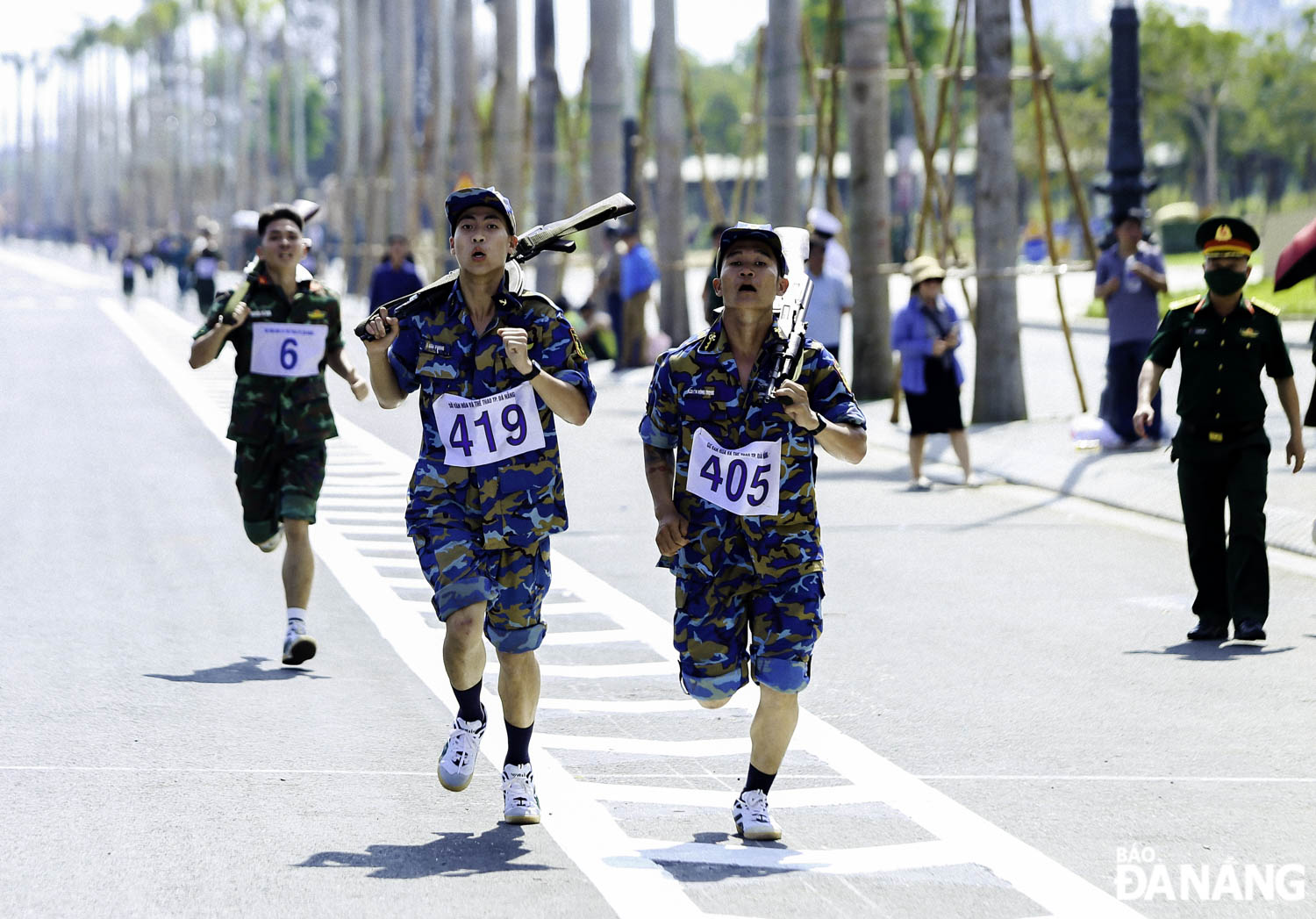Using cultural heritage as a factor in Da Nang's tourism development
Da Nang is now home to 2 special national relics, 17 national-level and 67 city-level sites, most of which have been already restored and embellished. The city is focusing on using historical and cultural heritage for the purpose of tourism development, thereby not only helping maximize the value of historical and cultural heritage, but also contributing to promoting the city’s socio-economic development, and promoting the city’s image to domestic and internartional tourists.
 |
| Hai Chau Communal House Festival attracted thousands of locals and tourists. Photo: X.D |
Promotion of cultural heritage
Downtown Hai Chau District boasts many historical and cultural relics with 1 special national relics, 4 national-level and 2 municipal-level sites, along with 13 others that have made it to the city’s inventory list. However, most of these sites have yet to be tapped into their full potential for tourism development.
Mr Le Tu Anh, the Head of the Hai Chau District Office of Culture and Information Office said that as part of the ‘Improving cultural tourism activities and organizing traditional cultural forms in Hai Chau District’ project, the unit has worked with local relevant agencies and associations to promote local cultural heritage through various cultural and artistic activities since 2021 in a bid to promote the development of the tourism sector.
In addition, importance has been attached to using mass media advertising to introduce local relic sites in an attempt to reach a wide audience, including local residents and tourists. Tour operators have developed fixed tours to cultural and historical monuments in Hai Chau District that allow tourists to explore local culture and history. Included are the Museum of Cham Sculpture, the Museum of Da Nang, and Dien Hai Citadel.
In its efforts to tap into full potential of local cultural and historical monuments for tourism development, the District Authority has asked for permission from the municipal government to create a tour entitled ‘Hai Chau District’s Cultural Heritage Journey’ to allow tourists to visit 6 cultural and historical relics, starting from the Dien Hai Citadel and ending at the Museum of Da Nang. The intention is to educate the public, including younger generations, about revolutionary traditions, as well as satisfy the needs and expectations of domestic and international tourists.
In a similar move, Son Tra District is focusing on using mass media to promote local historical and cultural relics to tourists at both home and abroad. Besides, heed is paid to creating inviting tourism routes and destinations in efforts to attract more tourists to the district, and the city as a whole.
Special attention is paid to digitalizing historical sites and creating QR codes for these places in order to allow locals and tourists to scan the QR Code with their smartphones to get full, detailed and visual information about the places where they visit. The purpose is to help younger generations in the city and tourists to learn about the history of the district. Furthermore, the district has installed road signs and facilitated locals and tourists to access information about local historical and cultural monuments.
Creating a highlight to attract tourists
 |
| Rituals and traditional festive activities taking place at historical and cultural relics are highlights to attract tourists. In the photo: The procession of the Sea God in progress within the framework of the ‘Cau Ngu’ Festival in Son Tra District in 2023. Photo: X.D |
Hoa Vang District boasts the highest number of cultural and historical monuments in the city with 33 ranked historical and cultural relics, including 6 national-level and 27 municipal-level sites.
However, some relics after undergoing restorations have yet to become community places for cultural activities or to be named among popular tourist destinations in the city. In addition, folk festivals are still monotonous due to a lack of entertainment activities.
Hoa Vang District People's Committee Vice Chairman Nguyen Thuc Dung said that focus will be developing new tourism products at a number of attractive relic sites in the coming time in order to promote the value of local relics as well as promote the development of the tourism sector. High priority will be given to connecting relics with community-based, eco- and agri-tourism clusters or destinations associated with local culture and history.
“Currently, the district has many relic sites that are able to connect with tours, and inland waterway tourism routes to attract tourists. Included are Tuy Loan Cluster, including Tuy Loan Communal House, ancient houses, Tuy Loan rice paper making facilities, and organic vegetable growing areas, or Thai Lai Cluster, including Thai Lai eco-tourism village, Thai Lai village communal house, entertainment and culinary activities" Mr. Dung said.
In recent years, Da Nang has spent a lot of money from its budget on restoring and embellishing cultural and historical relics.
After undergoing restoration work, historical and cultural relics should be tapped into their full potential for tourism development as they are an important asset of the city, helping make profit and significantly influence local economic development. Authorities at local level should be proactive in working with local relevant agencies and tour operators to create new tours and tourist routes associated with resources and characteristics of their locations in order to maximize the value of their local historical and cultural monuments.
Reporting by XUAN DUNG – Translating by H.L








